Eco-friendly Innovation
綠色創新
Build a Green and Sustainable LNG Receiving Terminal
With the global trend of reducing carbon emissions and mitigating global warming, Taiwan is also aiming for net-zero emissions by 2050. To meet the growing power demand, replacing traditional coal-fired power generation with liquefied natural gas (LNG) generation is a crucial midterm policy for many countries to promote energy transition. According to the Power Development Plan 2018-2037 by Thailand’s Ministry of Energy, the import volume of natural gas is expected to rise to 30 million metric tons per annum (MMTPA) by 2037 to meet future energy demands and for natural gas trading and supply chain management. By increasing the import volume of natural gas and constructing modernized liquefied natural gas (LNG) facilities, reliance on traditional coal and oil energy can be reduced, while carbon emissions and environmental impacts can also be lowered. CTCI collaborated with Italy's Saipem to jointly undertake the PTTLNG NongFab LNG receiving terminal project. Located in the industrial zone of Rayong Province, Thailand, this project is the second LNG receiving terminal invested and constructed by PTTLNG Company (a subsidiary of PTT Group) in the area. The scope of the PTTLNG NongFab LNG receiving terminal project includes two 250,000 cubic meter LNG storage tanks (the largest single tank capacity in Thailand), a gasification facility capable of supplying 7.5 million tons of LNG annually, a 6-kilometer-long trestle and jetty with unloading facilities (the longest trestle in the LNG industry worldwide), and eco-friendly administrative buildings along with work in design, procurement, construction, and commissioning. This project marks an important milestone in ESG (environmental, social, and governance) practices by taking environmental sustainability, corporate governance, and social responsibility into consideration. CTCI, a leading engineering, procurement and construction (EPC) project contractor in Taiwan and one of the top 100 globally, is committed to providing the most reliable services to global clients. CTCI positions itself as a "Guardian of Sustainable Earth" and strives to create "green engineering" that incorporates economic development and environment protection with its main profession, thereby achieving net-zero emissions and fulfilling corporate citizenship.
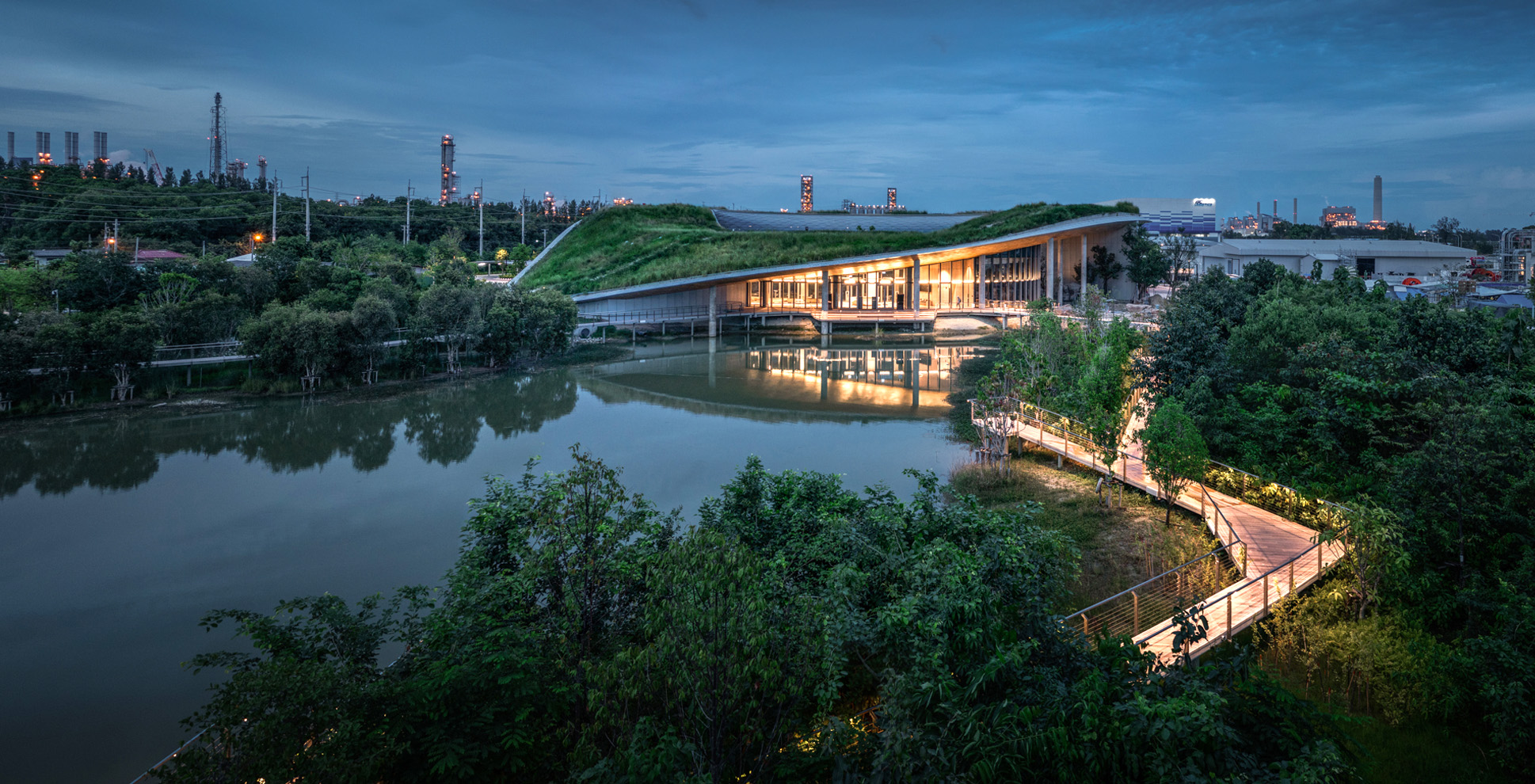
A View of the Administration Building.
Integrating Green Energy to Achieve Net-Zero Carbon Emissions
• Wind Power
capable of generating approximately 15 kw of electricity. Wind power is a clean, renewable energy source that can replace traditional power sources, thereby reducing carbon emissions and contributing to the sustainability of the planet. Additionally, this system provides stable power supply, reducing the risk of energy price fluctuations and minimizing land use, which helps to protect the local ecosystem.
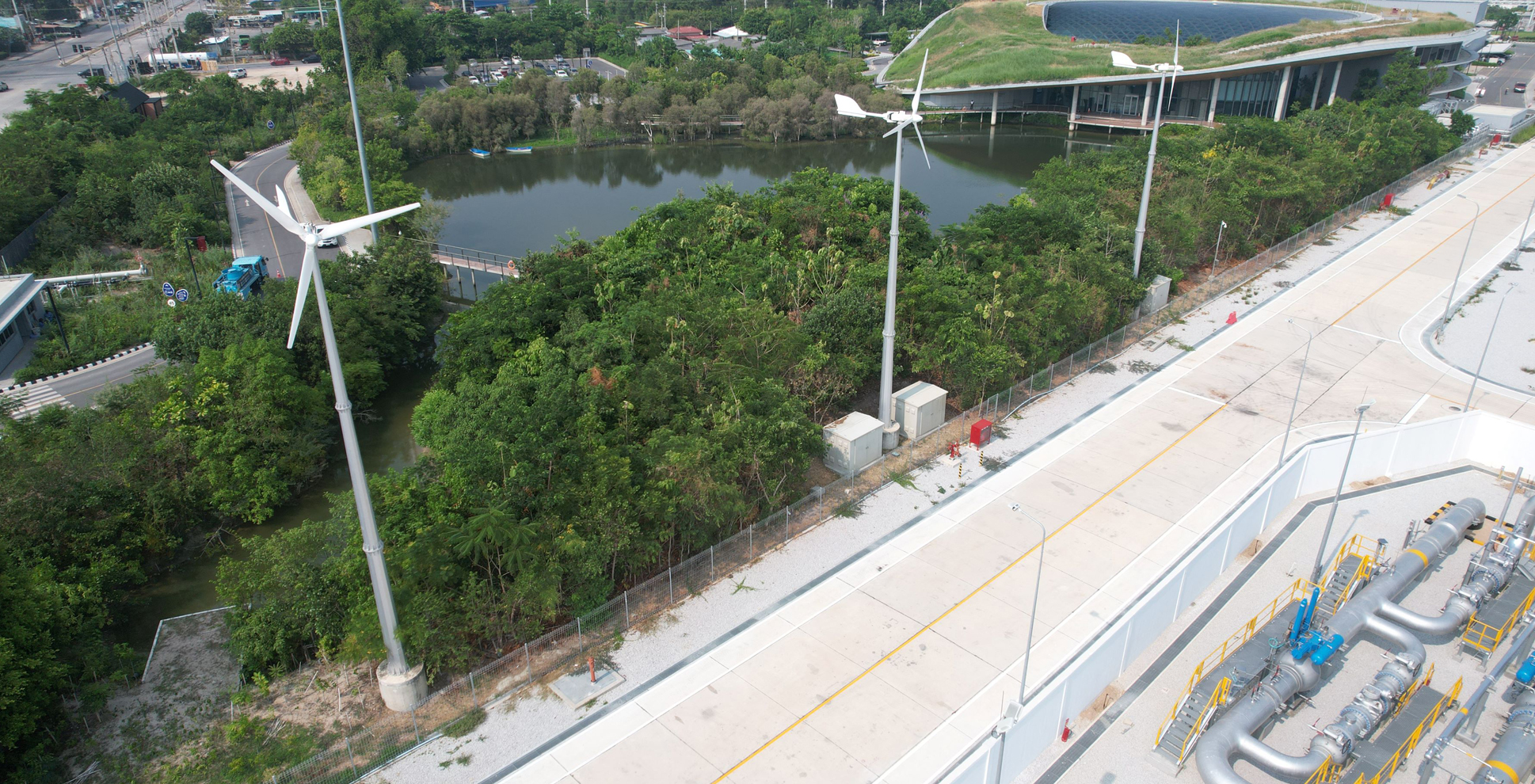
Wind Farm around the Administrative Building.
• Daylighting System
sun tubes or sun pipes, which are designed to channel natural sunlight into indoor spaces for illumination. Comprising a series of lenses and reflective devices, the solar tubes can capture sunlight from the roof and transmit it inside to provide natural lighting.
The primary advantages of solar tubes include energy efficiency, eco-friendliness, and the provision of natural and soft lighting, reducing energy consumption for indoor lighting. The solar tubes are designed to provide illumination without electricity, which is beneficial for conserving energy and reducing electricity costs.
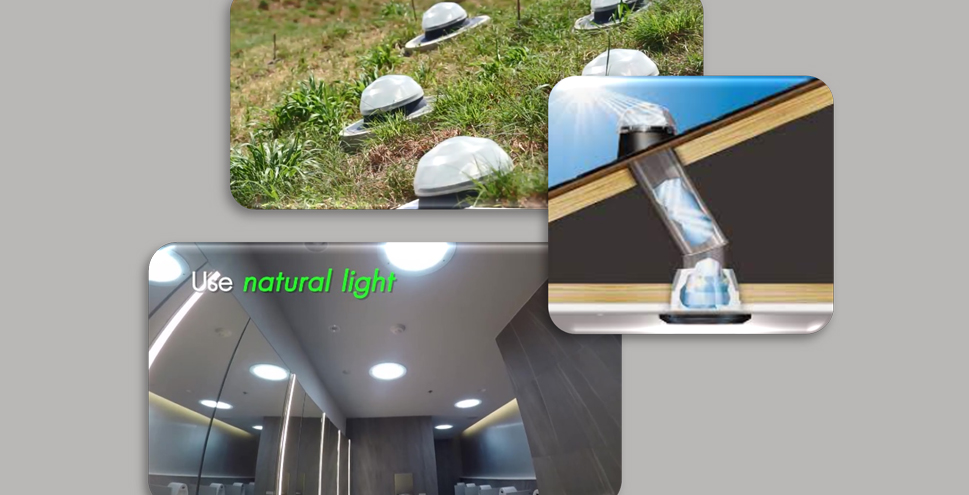
Natural Lighting with Solar Tubes.
• Solar Power
The roof of the maintenance building in the administrative area of this project is equipped with solar panels, which are of high-efficiency in converting sunlight into clean electricity to reduce reliance on traditional energy sources and lower carbon emissions. This green technology not only contributes to economic savings but reduces energy costs.
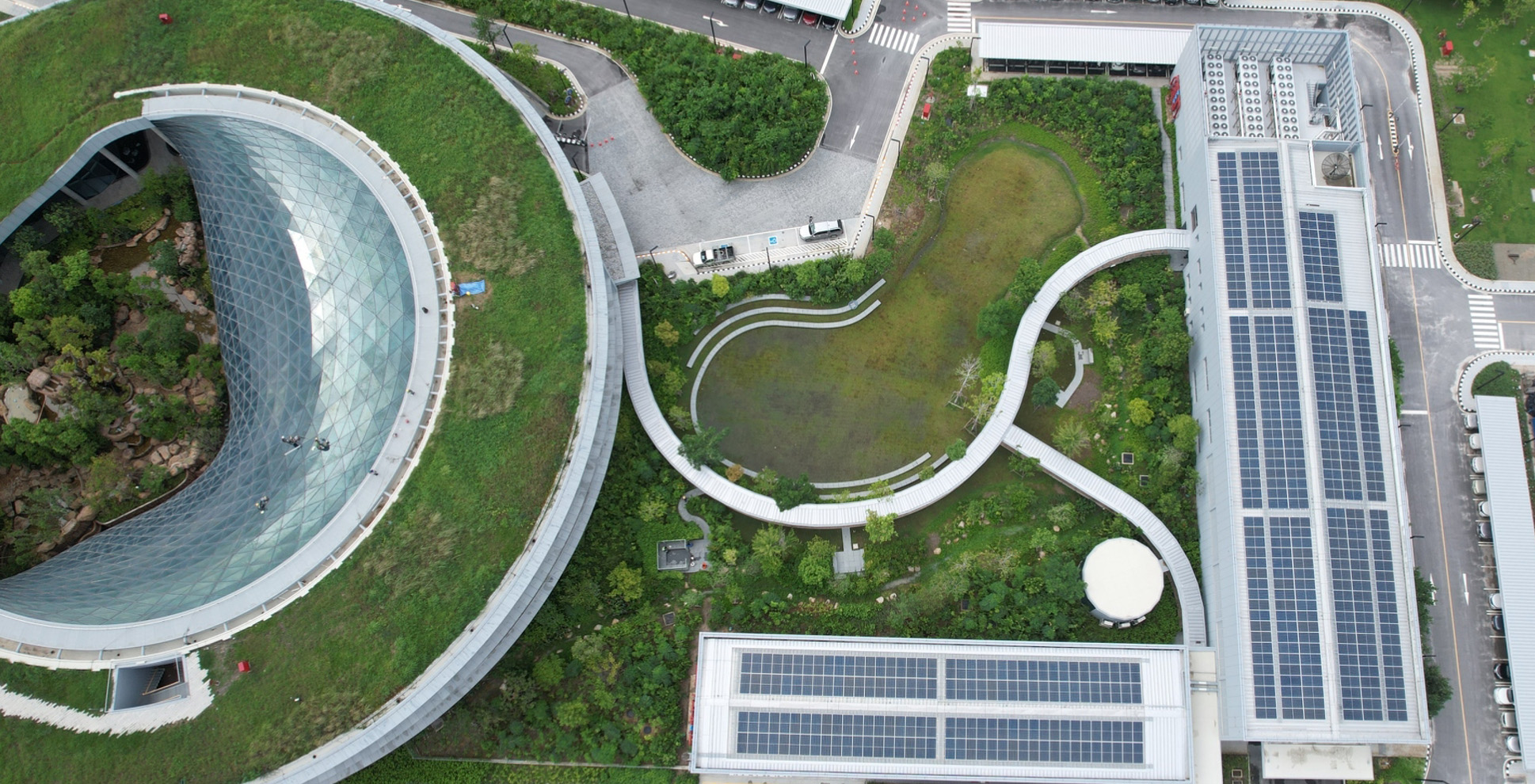
Solar Panels Installed on the Roof of the Maintenance Building in the Administrative Area.
• Roof Landscape for Energy Efficiency
The administrative building of this project incorporates extensive landscape on its roof, covered by vegetation, grass, or various types of green plants. This architectural design not only effectively insulates the building, but also reduces the building's heating and cooling loads, leading to energy savings, emission reduction, and building beautification.
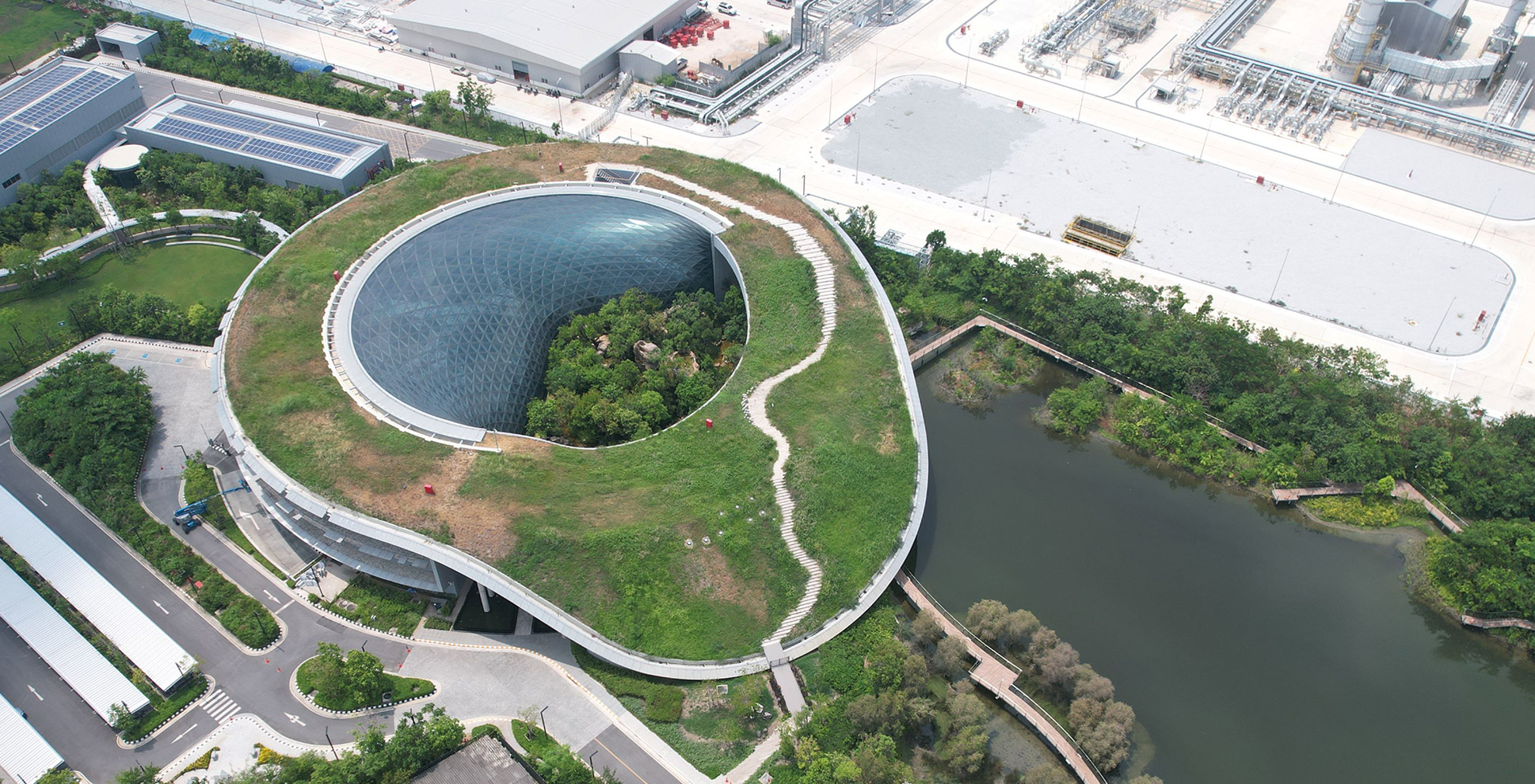
Roof Landscape.
Resource Recycling for Ecological Environment Protection
• Cold Energy Reutilization
Air conditioning equipment accounts for 7% of the total global greenhouse gas emissions, with a projected threefold increase by 2050. During the recent COP28 United Nations Climate Change Conference, countries were urged to reduce emissions from air conditioning by over 68% before 2050 to expedite decarbonization efforts.
In this project, LNG-derived cold energy is utilized for supplying air conditioning systems and cooling down the intake air of gas turbine generators (GTGs). This approach saves 71 million kilowatt-hours of electricity annually and reduces 37,000 tons of carbon dioxide emissions. The recovered cold energy from LNG can be used for air conditioning in the administrative building as well as for indoor landscape facility in the PTTLNG administrative building.
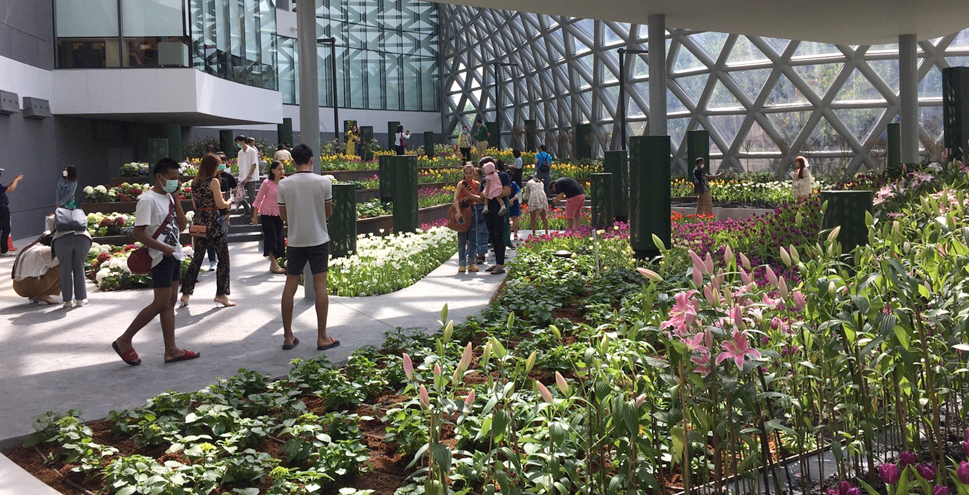
Plants in the Administrative Building Grow in the Greenhouse Powered by Regenerated Cold Circulation.
• Ecological Detention Pond
Natural detention ponds are essential infrastructure for managing stormwater drainage, alleviating adverse impacts of urbanization, and providing valuable ecosystem services. In this project, existing ponds near the administrative building are preserved to reduce the impact of increased rainwater runoff resulting from the conversion of green spaces to concrete surfaces on the surrounding community area. Moreover, this natural pond preserves the original ecological conditions prior to construction and maintains ecological diversity.
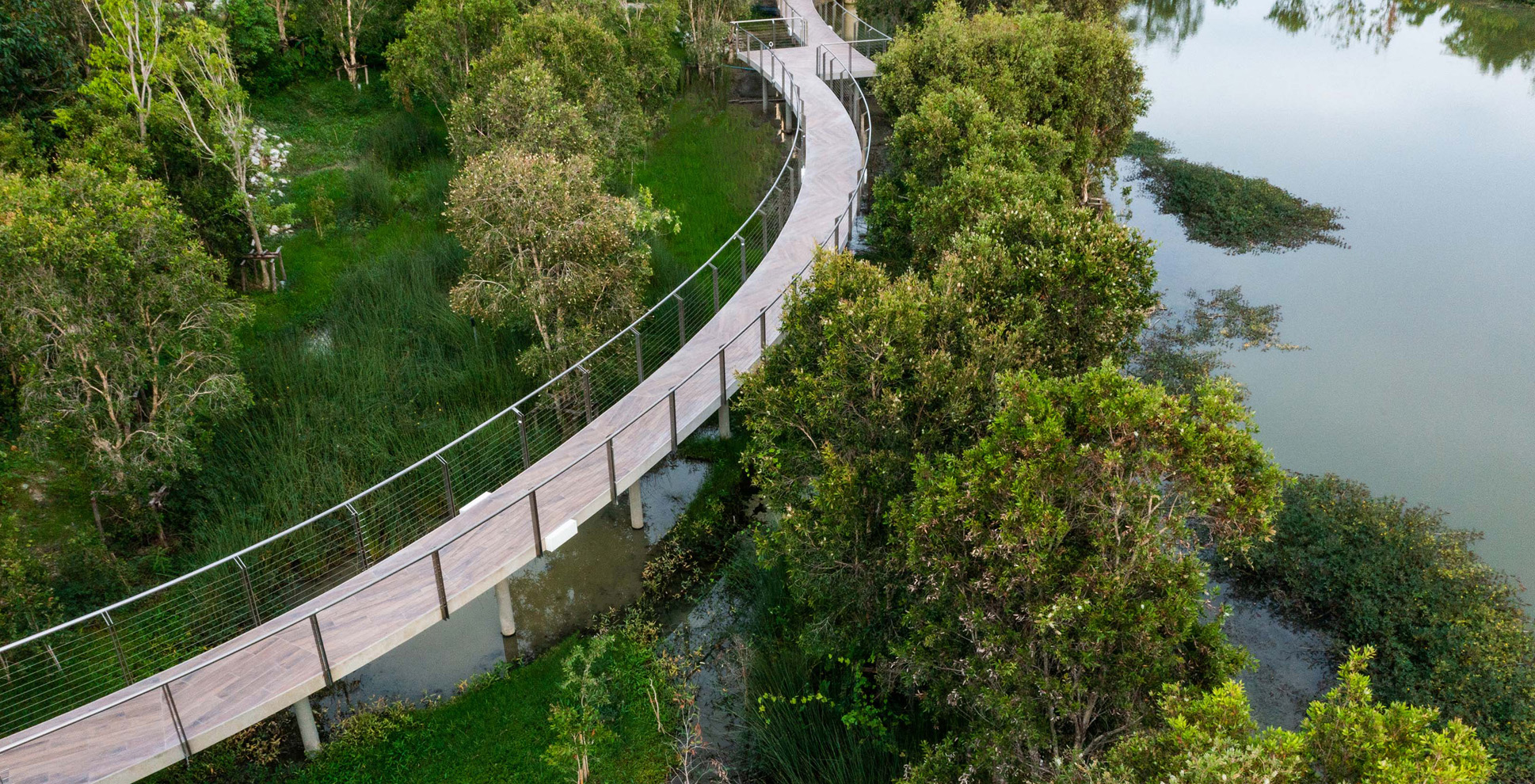
The Natural Detention Pond Near the Administrative Building.
•Waste Recycling and Reutilization
In this project, equipment wooden crates are used to make furniture for temporary offices. Typically, equipment wooden crates are only used for once during the equipment transportation phase before being discarded or incinerated. However, reusing these crates to make furniture can reduce wood waste, contribute to forest conservation, and minimize environmental impact.
Furthermore, the team of CTCI left wood materials to local residents, which not only reduces the need for landfill, but serves as a sustainable way of resource regeneration, fostering interaction with the local community.
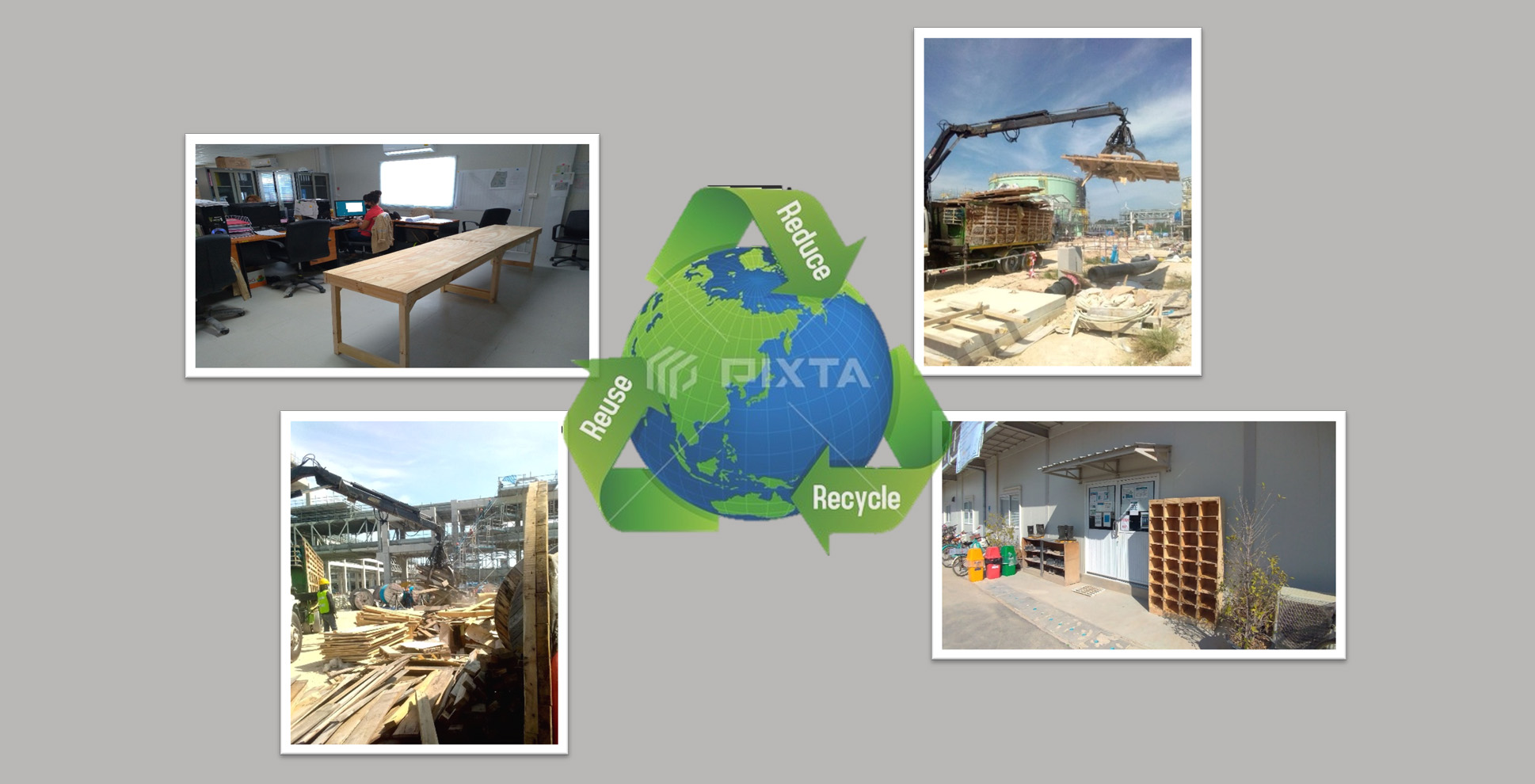
Using Waste Wood to Make Office Furniture.
Promoting Community Engagement and Interaction with Residents, Property Owners, and Firms for Mutual Benefits
•Open Park for Residents' Recreation Spaces around the administrative building are designed and preserved with many pre-developed plants, which can help restore natural hydrological functions and protect the habitats of various flora and fauna species for ecological enhancement. These areas are also open to the public, attracting many community residents to come for rest and relaxation.Spaces around the administrative building are designed and preserved with many pre-developed plants, which can help restore natural hydrological functions and protect the habitats of various flora and fauna species for ecological enhancement. These areas are also open to the public, attracting many community residents to come for rest and relaxation. • A Dedicated Community Engagement Officer to Interact with Local Residents, Fishermen, Temples, and Schools There is a dedicated Corporate Social Responsibility (CSR) officer for this project, who regularly visits local residents, fishermen, temples, schools, and other organizations around the facility At the same time, various activities are also organized to foster relationships between residents and property owners.
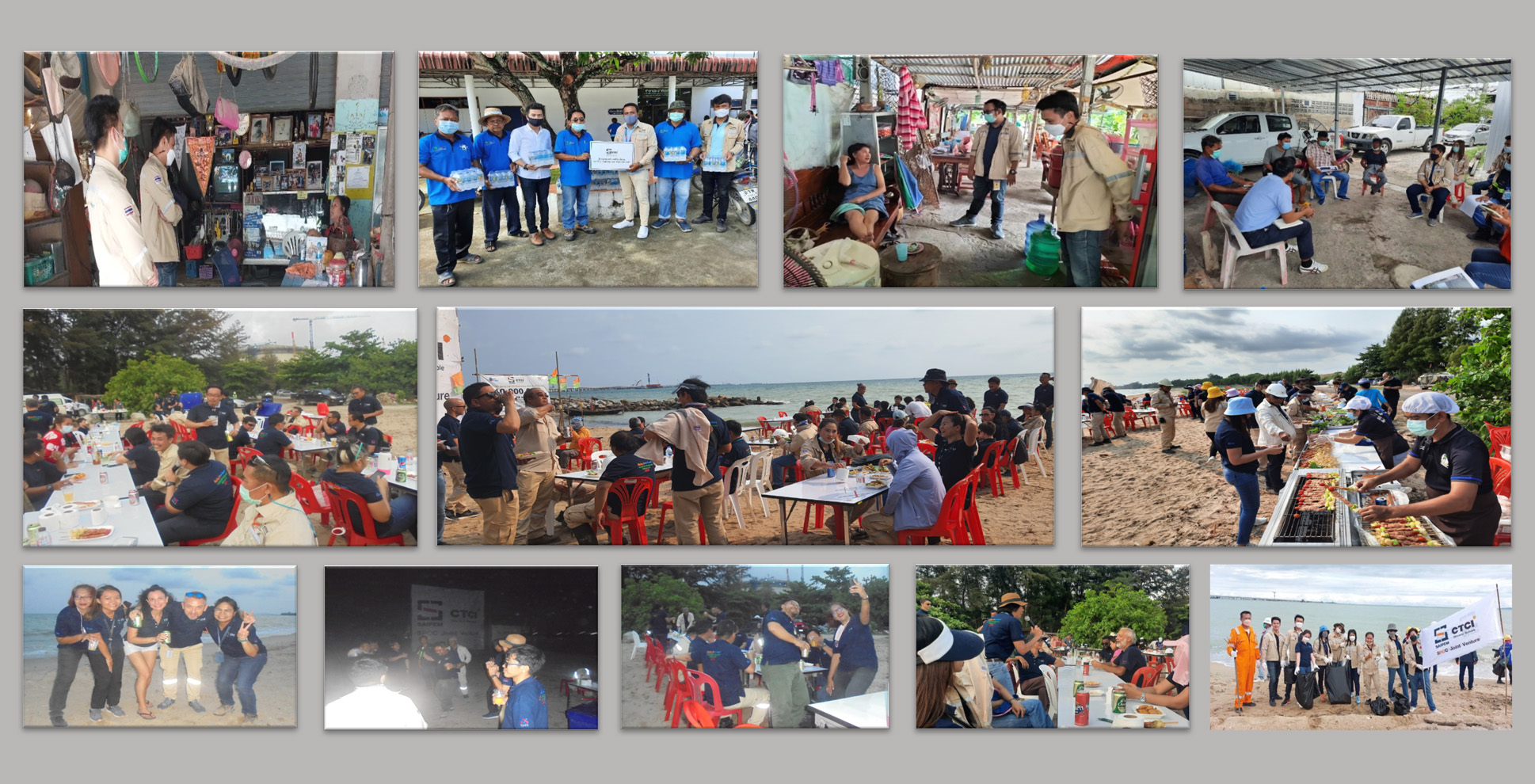
The CSR Personnel of This Project Visited Residents, Fishermen, Temples, and Schools.
• Beach Cleaning Activity
Several beach cleaning activities have been organized near the receiving terminal, where we collaborate with property owners and contractors to clear trash and plastic waste from the beach, protecting marine ecosystems and maintaining the beauty of the coastal environment.
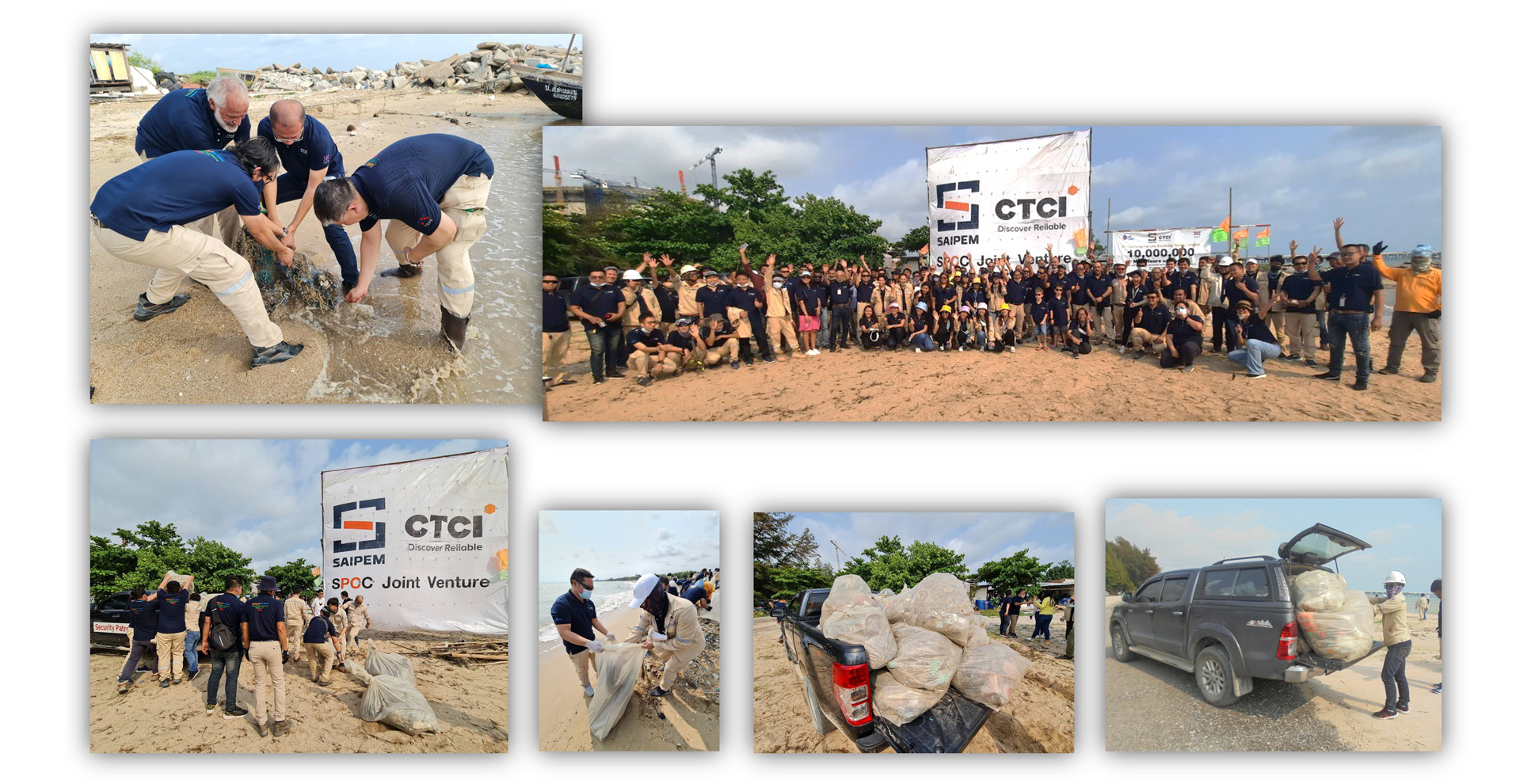
Beach Cleaning Activity with Owners and Subcontractors.


